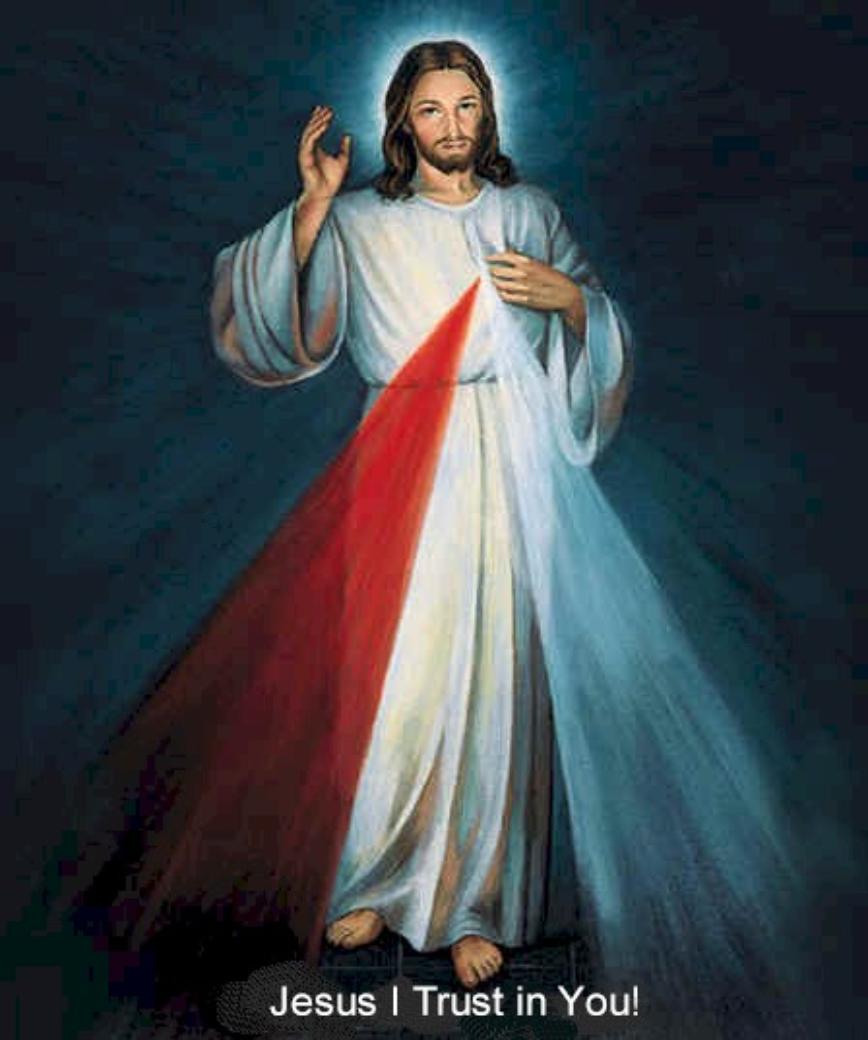Yesterday was my first visit to the National Shrine of the Divine Mercy in Stockbridge, MA. As it turns out, Fr. Michael Gaitley, MIC went through formation with the OMV before he joined the Marians. He is currently the director of the Shrine and Marian Helper Center, as well as a well-known author. (In fact, he wrote his first book, Consoling the Heart of Jesus, while a seminarian at St. Clement's. It really makes one think about the use of one's time...).
One of our priests currently assigned in the Philippines is visiting Boston and wanted to go to the Shrine so I chose to tag along at the last minute (instead of going to watch at the Boston Marathon finish line as I had planned).
Fr. Michael cleared his schedule and spent the entire afternoon with us. We got a thorough update on new happenings with the Marians and a tour of their publishing center, which has recently been expanded to include a state-of-the-art gallery wrapping facility where reproductions of the Divine Mercy images are digitally impressed on canvas, stretched, and wrapped on wooden frames. It is part of the MIC expansion of their apostolate in distribution of Divine Mercy images.


In fact, many of the images that they (and others) have circulated for the passed half century have been revitalized by new digital copying and image editing technology in the last few years. One of these projects was the restoration of an original image from Lithuania started in the year 2000 and, more recently, continued work in digital enhancement to restore details lost through years of neglect.


Example of digital image restoration undertaken by the Marians.
There are several popular versions of the Divine Mercy image (as revealed to St. Maria Faustina, that "Not in the beauty of the color, nor in the brush lies the greatness of this image, but in My grace."). But there is only one that St. Faustina herself directed the artist, known as the "Vilnius image" because of where it was painted. She reportedly wept after the artist's twelfth attempt to portray her description of her vision of Jesus, but realized it was grace and not the art that would change hearts. Despite this, the piece has several distinctive features that other popular images such as the Hyla (above) and Skemp versions do not. The Vilnius image is less well-known because Lithuania ended up part of the Soviet Union after the war and replicas were not easily obtainable. But it is regaining attention now that it is accessible and has had fifty-plus years of candle soot removed.
Vilnius Image
Immediately after praying the chaplet at 3:00 was when we first heard about the bombings in Boston. Things were chaotic for a while as all the Oblates were being accounted for; Copley Square is only a few blocks from the shrine and even closer to St. Francis Chapel, and because it was a day off from class many of us had been about town by ourselves. Fortunately, four of us who had considered going down to the finish line were elsewhere for one reason or another.
Over the next few hours, we debated whether to try and get back to Boston or stay over at the MIC monastery. I was able to contact family members during the intervening time and let everyone know I was safe. It was difficult because the cell phone network had been suspended in Boston and other people we could communicate with outside the city didn't have complete information about security measures and road closures. We ended up returning but not getting back until late. We were only just able to get home by inbound Boylston Street: the evacuated area ended one block east of us.
Today was in some ways a regular Tuesday, but road blocks and national guardsmen in the neighborhood were a reminder that normality has not returned: a large segment of the city on our doorstep is still accessible only through security checkpoints.
For me, it is very different to have something traumatic happen down the street. Hearing about terrorism in New York or D.C. was simply not as immanent as seeing the sidewalk I walk down several times a week pocked and blood-spattered. And knowing people who were in the area and recount taking cover or being evacuated through alleys before the dust had settled. And knowing that I had very nearly decided to be there myself. Even the tragedies of complete strangers are more evocative when I practically see the scene from the stoop. It feels very close to home.
The visit to the Shrine is salient not only because of the events of the day, but because of personal growth and my Lenten focus on God's Mercy: how I encounter it in my life and how I reflect it to others. It casts all the more relief on how small changes in the spiritual life loom large when the world seems shaken, such as how I react to those who need compassionate care and what I say to those struggling with anger or hatred or nursing wounded hearts, wounds only the grace of God can heal.







No comments:
Post a Comment